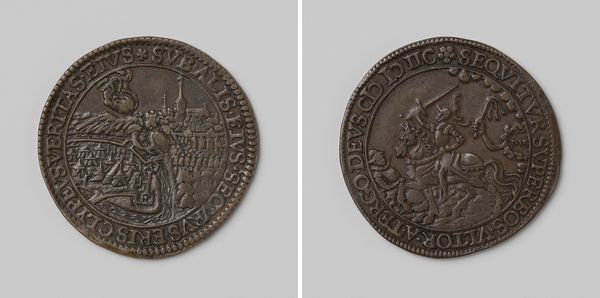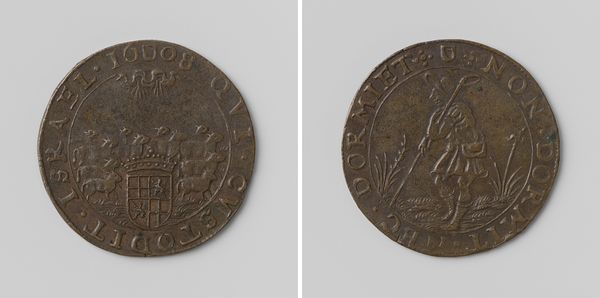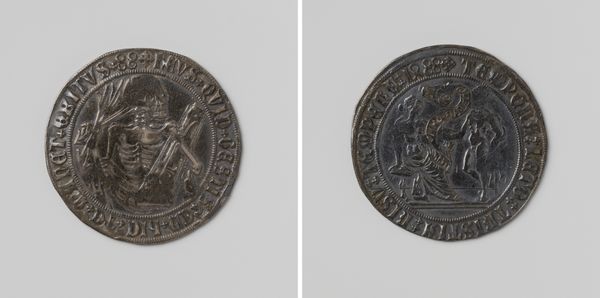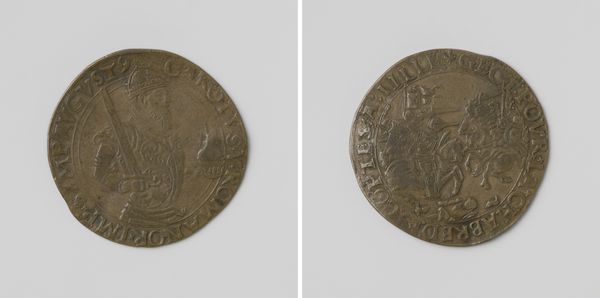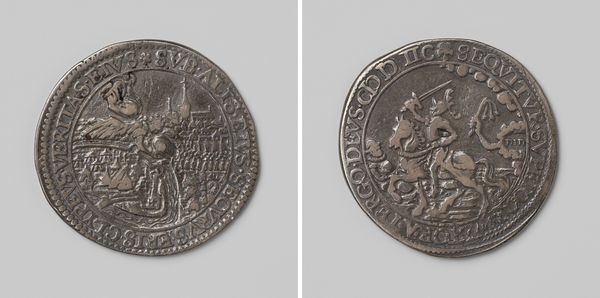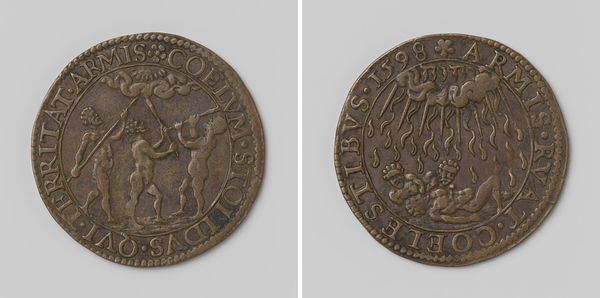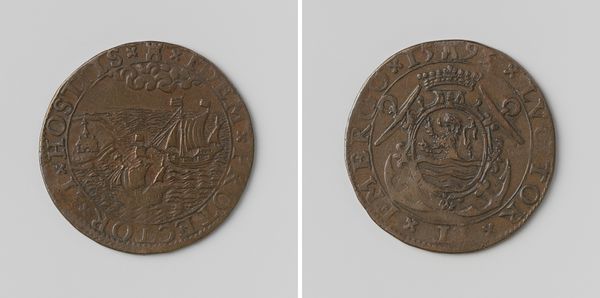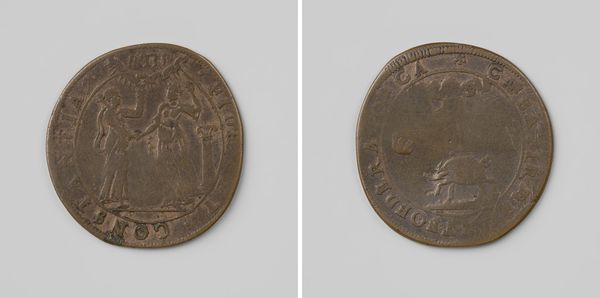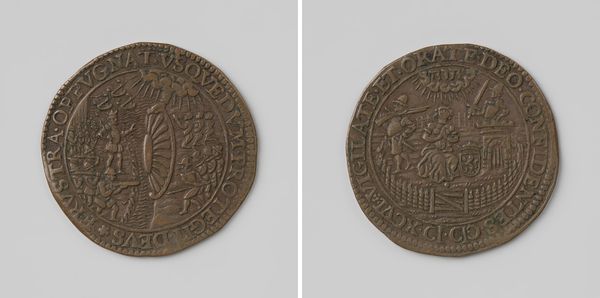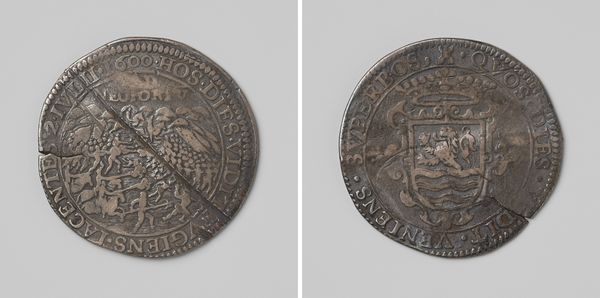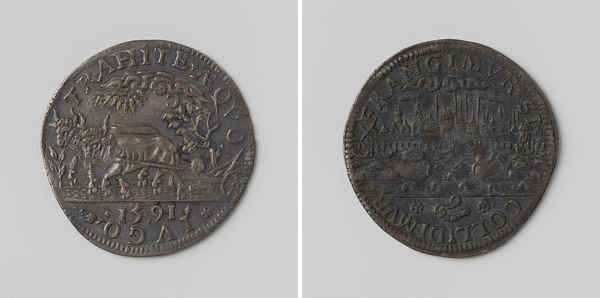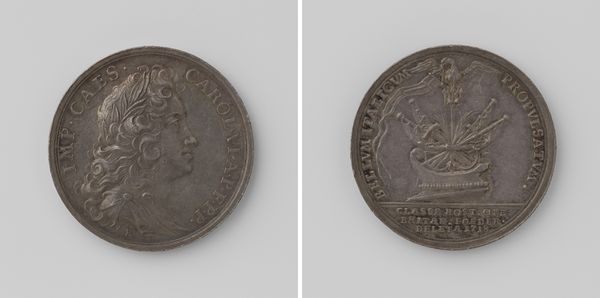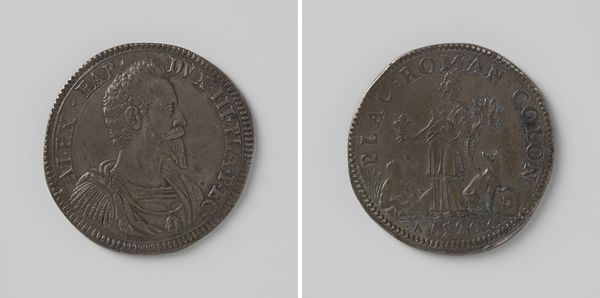
Sluiting van het drievoudige verbond tussen Engeland, Frankrijk en de Republiek 1596
0:00
0:00
anonymous
Rijksmuseum
carving, print, relief, bronze, sculpture
#
medieval
#
carving
# print
#
sculpture
#
relief
#
bronze
#
sculpture
#
carved
#
history-painting
Dimensions: diameter 2.9 cm, weight 68 gr
Copyright: Rijks Museum: Open Domain
Curator: Here at the Rijksmuseum, we have an intriguing print titled "Sluiting van het drievoudige verbond tussen Engeland, Frankrijk en de Republiek," dating back to 1596 and attributed to an anonymous artist. It seems to be made of bronze, a relief of some kind. What's your immediate impression? Editor: Austere, definitely austere. The relief is quite flat, and the forms, while legible, seem a little stiff. The circular composition traps the narrative. Curator: Right. Let’s consider the context of this object. This print commemorates a political alliance, a triple entente between England, France, and the Dutch Republic, formed to counter Spanish power. The materials and techniques of production are quite telling. A bronze relief implies permanence, an effort to immortalize this agreement in a relatively accessible medium—it is a print, not something that could only be shown to the most important people. It is not, say, painting or gold. Editor: Absolutely. The symbolic language used is interesting; on one side we have figures joining hands under radiant light and an inscription—allegorical representations, clearly. The other side has that aggressive wild boar—Spain? What of the clipped horse head? The entire object screams political discourse, of course, it shows itself within a semiotic play of image, text, and form. Curator: The choice of bronze is crucial here. Its durability ensured these political ideals, and their visual representations, circulated widely. Think of the workshops involved, the skilled labor. We are speaking about a tangible investment in the message—a commitment from these nations that goes beyond mere words. What would its original consumption and circulation look like, for those that handled it or witnessed its presence? Editor: And consider the formalism too: the texture, created by the carving, defines those harsh lines of conflict in that image, as much as any history we learn about Spain. I would say that texture makes up half of the narrative of this artwork, along with the stark tonal contrast. Even its function as a token dictates its visual encoding. Curator: Well, looking at the processes that produced this image alongside the historical backdrop surely makes this artwork speak to larger socio-political dynamics. I think that approach really helps us appreciate the intricate web of factors behind even what might appear a rather simple object. Editor: Indeed, an image whose lines conceal entire battlefields, we might say. I can walk away with a new respect for such tokens, for I found much here by interrogating form itself.
Comments
No comments
Be the first to comment and join the conversation on the ultimate creative platform.
